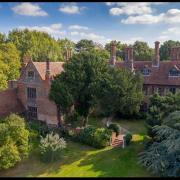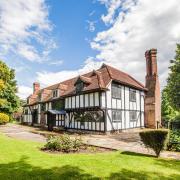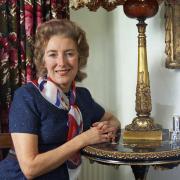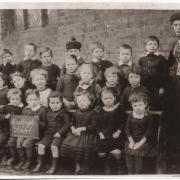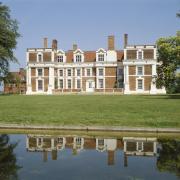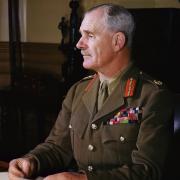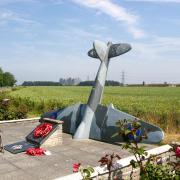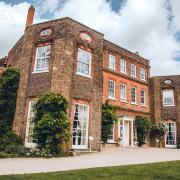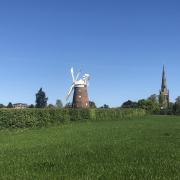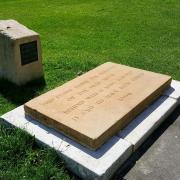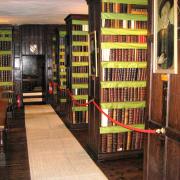Wivenhoe House is best known for appearing in John Constable’s 1816 painting Wivenhoe Park. Here, Sybilla Hart discovers the stories behind the Essex landmark
Wivenhoe House was forever immortalised in the 1816 painting Wivenhoe Park by John Constable, which today hangs in the National Gallery of Art in Washington, DC. A lot has changed at Wivenhoe House since it was painted in the early 19th century. It all started in 1759 when Isaac Rebow, a former Etonian and MP for Colchester, inherited Wivenhoe Park and commissioned Thomas Reynolds to build him a fine mansion house on the site. The MP had several daughters, including an illegitimate child by his cousin, and a fairly tumultuous political career by all accounts.
Some 55 years later, his son-in-law, Major General Francis Slater Rebow, commissioned John Constable to paint the famous picture for the cost of 100 guineas. General Rebow was Constable’s patron and friend; the young painter felt extremely at ease with the Rebows in what he described as their ‘magnificent drawing room overlooking Colchester.’ General Rebow also famously returned from the Peninsula War with two cork oak cuttings in his boots, which still stand tall in the grounds of Wivenhoe House to this day.

Constable painted Wivenhoe Park whilst sitting at his easel en plein air, rather than in his studio, during the late summer of 1816. He sent letters to his future wife, Maria Bicknell, telling her all about it. An extract of a letter Constable sent to Maria reflects the friendship that existed between the painter and the Rebows.
My dearest Love, …I have been here since Monday and am as happy as I can be away from you – nothing can exceed the kindness of the General and his Lady – they make me indeed quite at home…
Constable painted in small details, such as the Rebow’s daughter, Mary, and her friend driving a donkey cart into the famous painting. These subtleties were a nod to Constable’s intimate friendship with the Rebow family. Could it be that Constable made an extra-special effort to accommodate his patron’s requests given that they were so supportive of his relationship with Maria, unlike her own family?
Maria Bicknell was the granddaughter of the Rector of East Bergholt. John and Maria fell in love years earlier, but the Rector opposed the marriage on the basis that John did not have enough money. All came good in the end as John inherited some money on his father’s (Golding) death. Golding Constable inherited Flatford Mill from his childless uncle, Abraham Constable, who was a good example of an 18th-century entrepreneur. John and Maria Constable were married on October 2, just days after Constable finished Wivenhoe Park, and went on to have seven children together (though sadly they didn’t all survive). Tragically, Maria Constable died of tuberculosis in 1826; John was heartbroken and wore black for the rest of his life. By all accounts, he was a doting and kind father to his children.

When General Rebow died in 1845, the house passed to his son-in-law, another MP, John Gurdon Rebow. The liberal politician had married Rebow’s daughter, Mary, whose first husband had died and assumed the family name. Unfortunately, Mary passed away seven years into the marriage. As they had no children, this is where the Rebow bloodline died out. John remarried Irish aristocrat Lady Georgina Graham-Toler in 1845. Lady Georgina was twenty years his junior and they went on to have three children together.
Unfortunately, there was not to be a happy ending. Lady Georgina was removed from John’s will, and in 1867, was admitted to a private mental home near London where she died 33 years later.
John Gurdon Rebow had Wivenhoe House re-modelled with the help of the architect Jonathan Hopper, while William Andrews Nesfield was commissioned to alter the grounds, coach house and roads within the estate. On the MP’s death in 1870, Wivenhoe Park and house (plus significant debts) passed to his son Hector Gurdon Rebow. Soon afterwards in 1884, when England’s worst-ever earthquake on record struck, Wivenhoe House escaped virtually unscathed, save for a couple of loose chimney pots.
In 1902, the house was sold to Charles Edmund Gooch, and the Gooch family still farm the land to this day. Charles Gooch bought a fair amount of the house’s furniture, but alas, not Constable’s Wivenhoe Park. During the Gooch family tenure, Wivenhoe house was requisitioned by the War Department and used as an HQ for the SAS as well as a tank regiment.

Allegedly (and quite believably), the tanks scared off the population of fallow deer that resided in the park. The War Department ruffled some other feathers, too – Mrs Gooch is said to have left her husband, Charles Gooch, for one of the officers! At the end of war, the pair went to live at the officer’s tea plantation abroad. Though this must have been difficult for her family, her younger sister, a school teacher in Hertfordshire, came to the rescue. There was a fairytale ending of sorts, as the sister went on to marry her former brother-in-law, Mr Gooch, and lived at Wivenhoe House with him and his two sons. Her school holidays coincided with theirs and hence some sort of harmony was restored at Wivenhoe House.
In 1964, the Gooch family sold the house to the University of Essex, who now operate it as a hotel. The University added a modern extension designed by local architect Bryan Thomas in the 1980s and now run a leading hotel school, Edge Hotel School, close by. The hotel underwent a £10 million refurbishment around a decade ago, restoring it to its former glory and original state.





